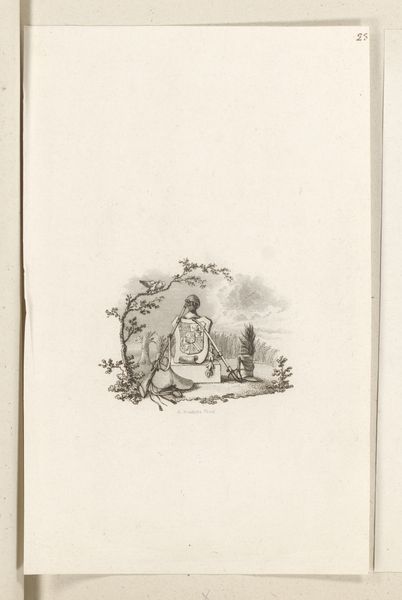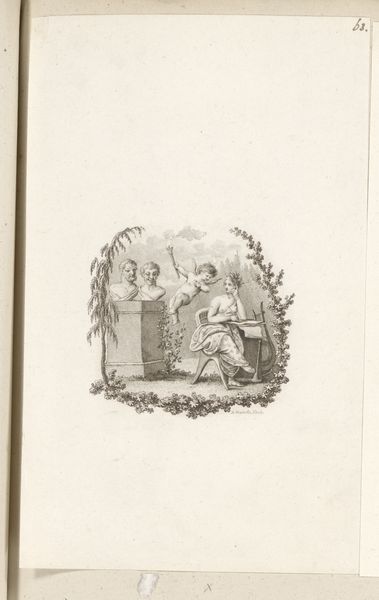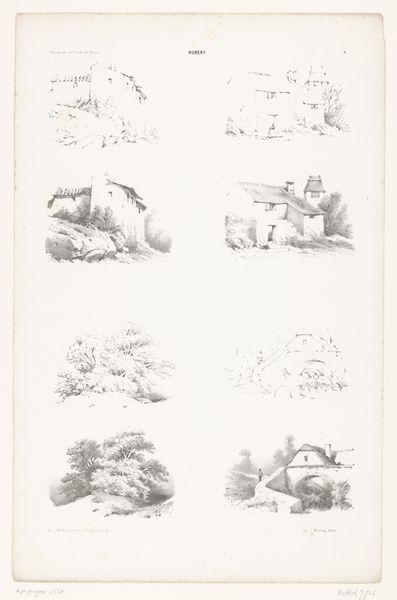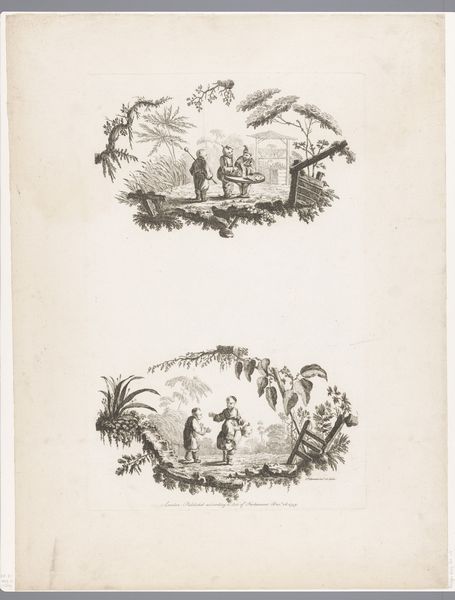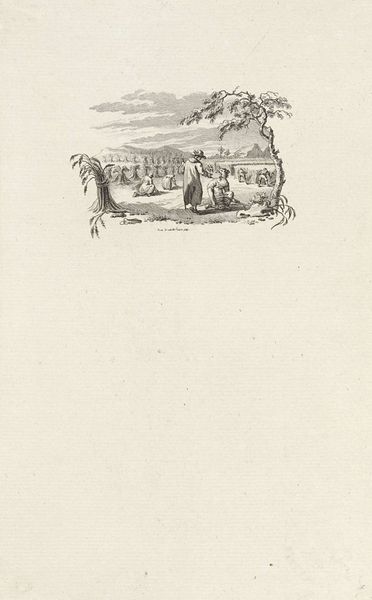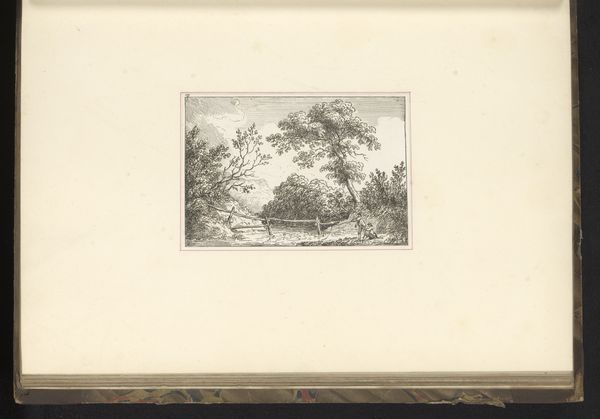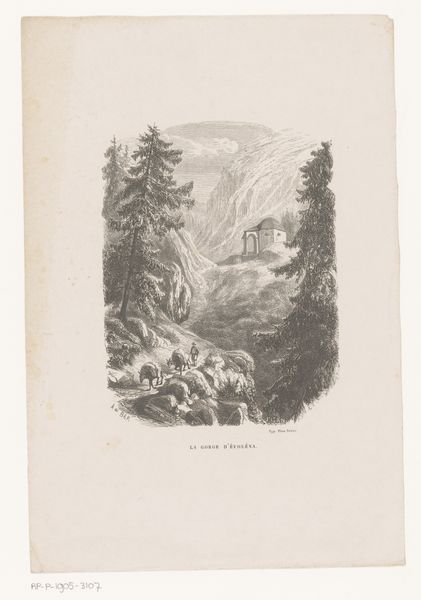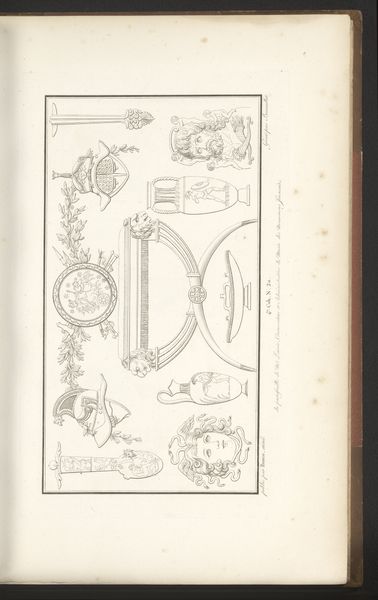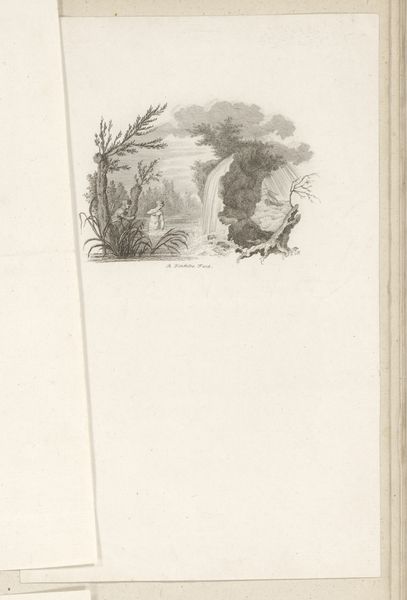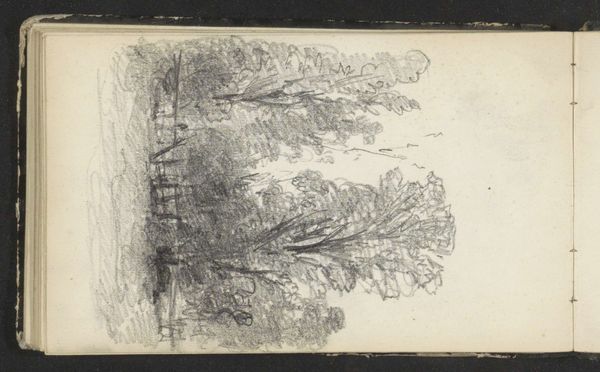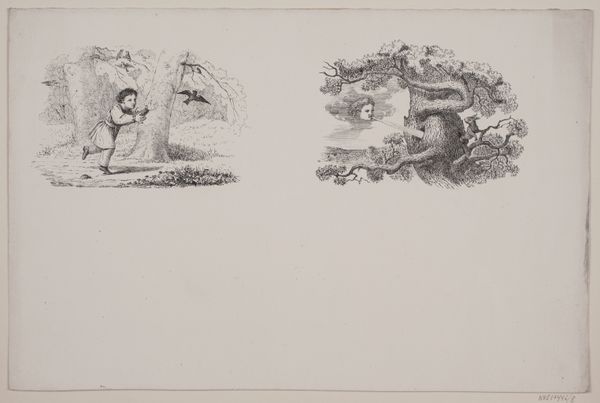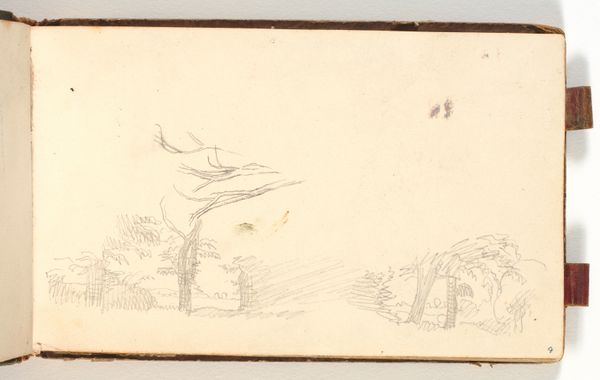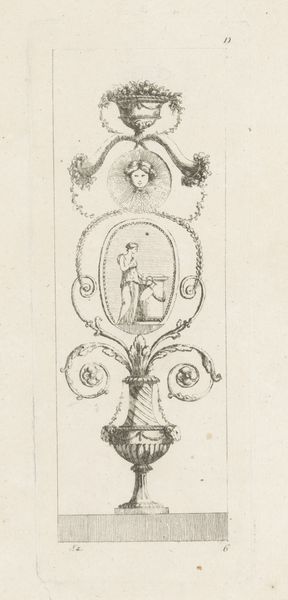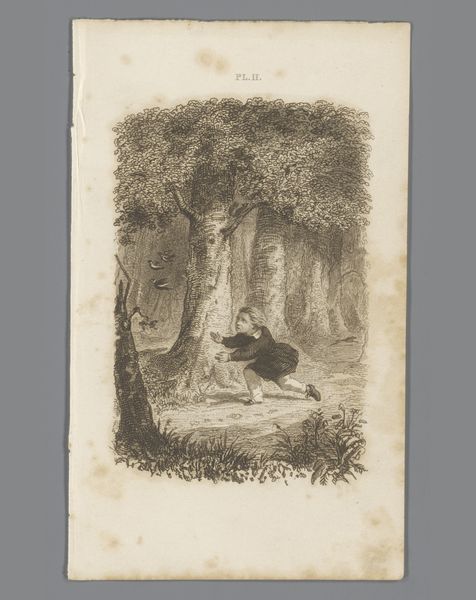
print, engraving
#
portrait
#
neoclacissism
# print
#
old engraving style
#
form
#
line
#
history-painting
#
engraving
Dimensions: height 255 mm, width 166 mm
Copyright: Rijks Museum: Open Domain
Curator: This engraving, created around 1813 by Reinier Vinkeles, is titled "Mother with child next to physical instruments". It resides here at the Rijksmuseum. Editor: My initial impression is one of quiet intellectualism. The somber palette and the deliberate arrangement of objects lend a sense of gravity to the scene, despite its intimacy. Curator: It’s an intriguing composition. Vinkeles was working within the Neoclassical style, you see. Notice the clarity of line and the almost sculptural quality he brings to the figures. The mother and child are rendered with classical composure. Editor: The choice of line certainly reinforces that. But it is odd to me to have this intimate scene situated with these strange instruments in the background, it strikes me that this has less to do with mother and child and more about the tools. Can you help me situate the setting, how this engraving might reflect broader social or intellectual currents of the early 19th century? Curator: The inclusion of the scientific instruments are no doubt significant in this tableau. At the time, the Enlightenment's emphasis on reason and scientific inquiry had a profound impact. There’s a growing veneration of empirical knowledge, even within the domestic sphere. By placing these objects alongside the mother and child, Vinkeles suggests that reason and nurture aren’t mutually exclusive realms, but actually compatible elements of an enlightened society. Editor: And yet, there’s a tension in the image. The softness of the mother and child contrasts with the cold precision of the instruments. This juxtaposition feels almost symbolic of a changing world, with perhaps traditional values existing side-by-side with burgeoning scientific progress. There’s a slightly melancholy air about her that might suggest this friction. Curator: The form evokes balance and idealized beauty in line with the artistic tastes prevalent at that moment in the Netherlands, it suggests an era that embraced order, reason and a specific sort of restrained expressiveness. It’s quite evident how that comes through within Vinkeles' printmaking practice. Editor: Examining Vinkeles’s rendering really opens my eyes. Understanding these cultural forces at play clarifies the narrative so masterfully embedded within the work. It has transformed my initial perception into a deep appreciation of the engraving’s nuanced expression of intellectual curiosity during the beginning of the 19th century. Curator: Indeed, these meticulous lines tell so many stories if we let them.
Comments
No comments
Be the first to comment and join the conversation on the ultimate creative platform.
